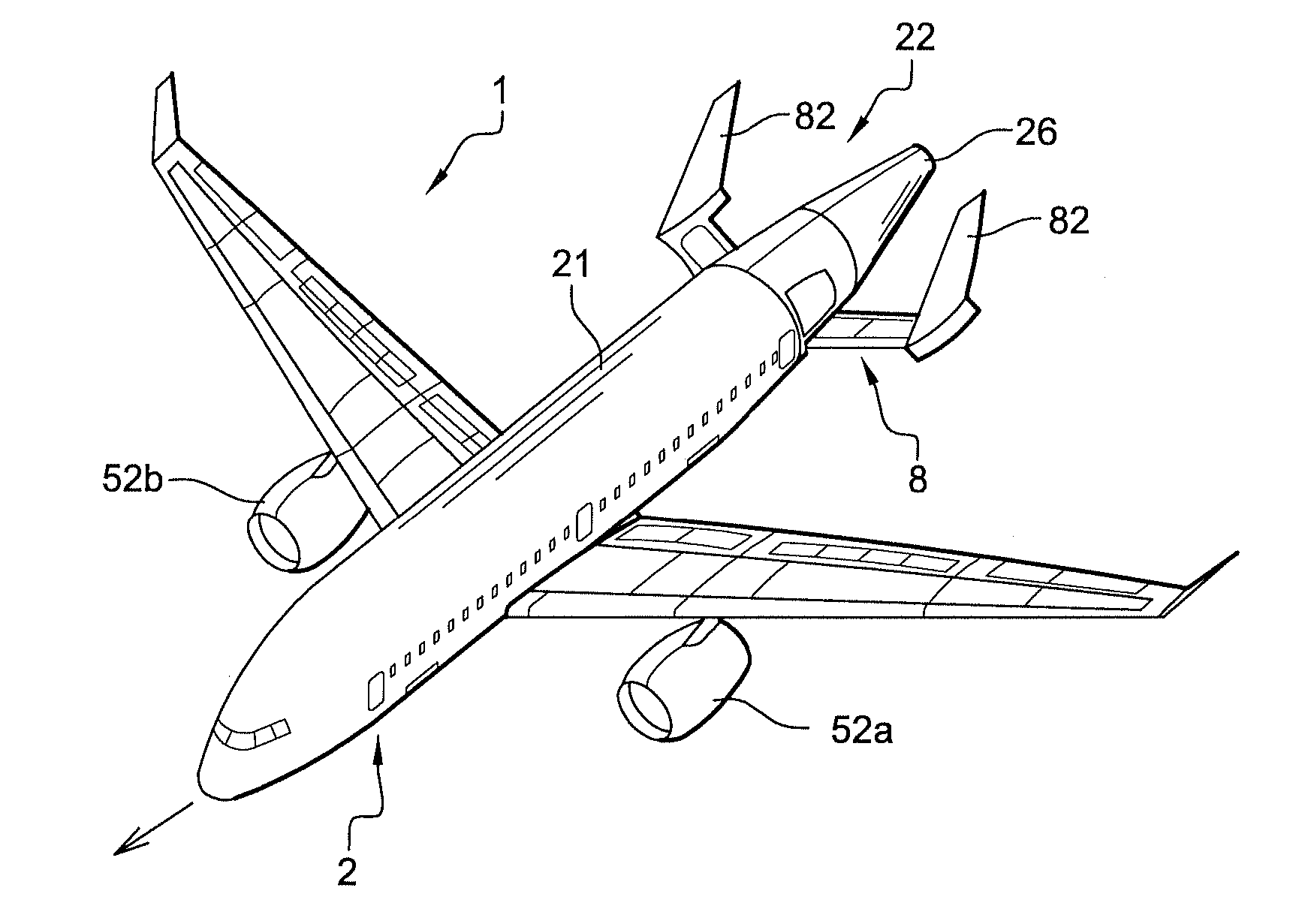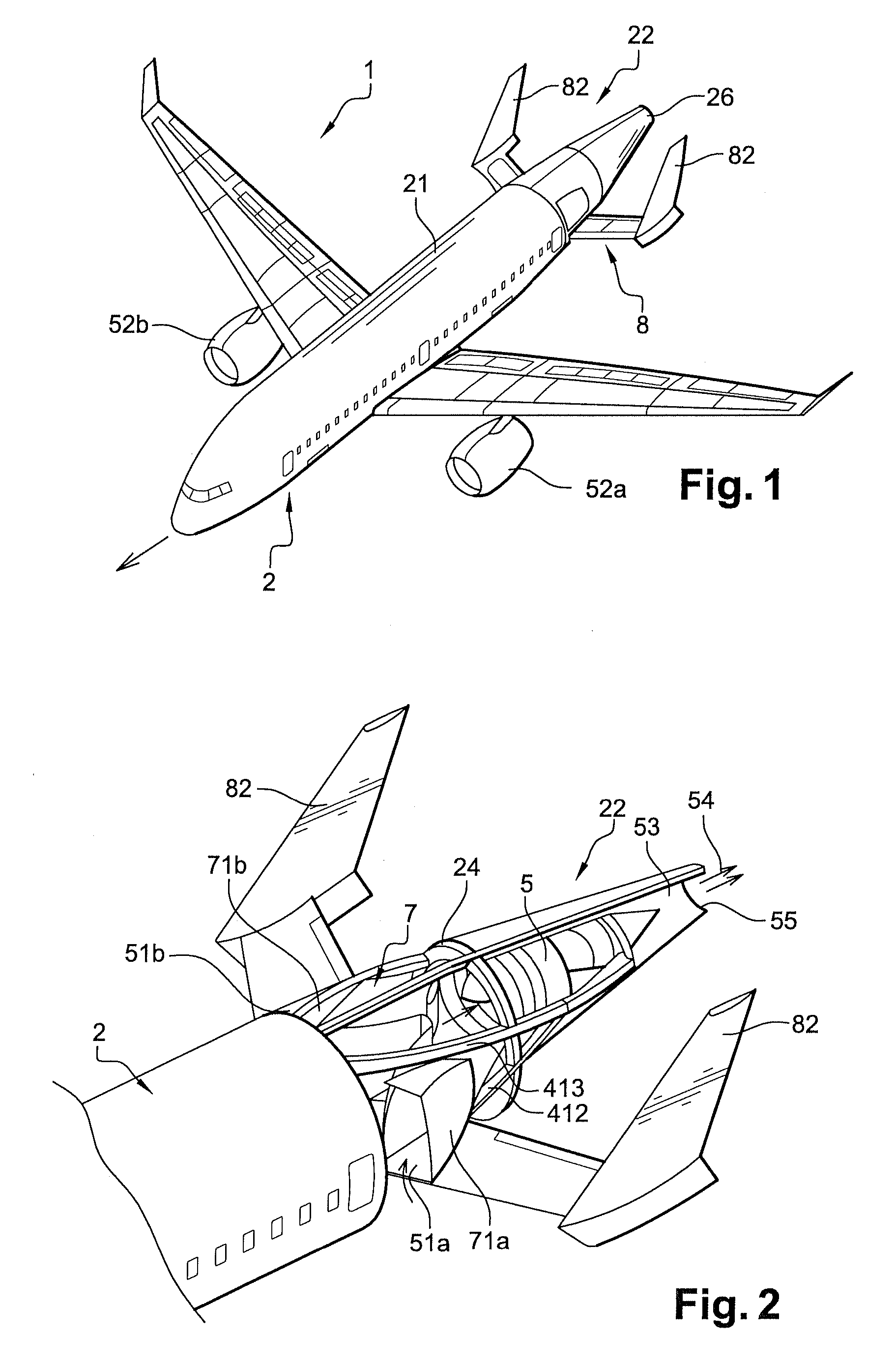Beam mounted rear propulsion system for an aircraft and aircraft with such system
a rear propulsion system and beam technology, applied in the direction of aircraft power plants, aircraft power plants, aircraft power plant components, etc., can solve the problems of not necessarily presenting an optimum thrust balance, apu systems coming from the mass that they represent, and no solution has been implemented, so as to achieve optimal load transfer and significant rigidity of the carrying structure
- Summary
- Abstract
- Description
- Claims
- Application Information
AI Technical Summary
Benefits of technology
Problems solved by technology
Method used
Image
Examples
Embodiment Construction
[0046]On an aircraft 1, shown in FIG. 1, according to the disclosed embodiments a fuselage 2, in a known way, comprises a substantially cylindrical central part 21 which is continued by a rear part 22 of the fuselage known as tail cone, rearwards along the displacement direction (materialized by an arrow directed forward on FIG. 1) of the aircraft during flight, whose sections decrease gradually from a section of the cylindrical part towards a final, relatively small, rear section.
[0047]In the following description of the aspects of the disclosed embodiments, it will be indicated by “front” and “rear” the aircraft forward direction along the flight displacement direction and respectively backward along the direction opposed to the flight displacement direction.
[0048]More particularly, in the auxiliary propulsive system according to the disclosed embodiments, the final section corresponds to an exit section of an auxiliary jet engine 5 fixed within the tail cone 22 as illustrated on ...
PUM
 Login to View More
Login to View More Abstract
Description
Claims
Application Information
 Login to View More
Login to View More - R&D
- Intellectual Property
- Life Sciences
- Materials
- Tech Scout
- Unparalleled Data Quality
- Higher Quality Content
- 60% Fewer Hallucinations
Browse by: Latest US Patents, China's latest patents, Technical Efficacy Thesaurus, Application Domain, Technology Topic, Popular Technical Reports.
© 2025 PatSnap. All rights reserved.Legal|Privacy policy|Modern Slavery Act Transparency Statement|Sitemap|About US| Contact US: help@patsnap.com



